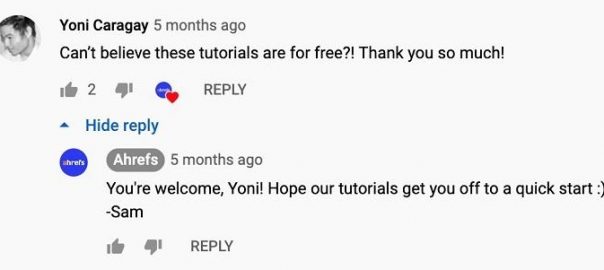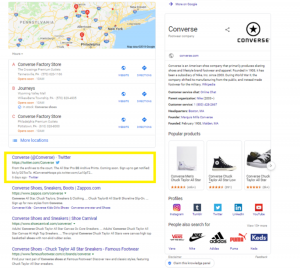Even before the spread of the novel coronavirus, live streaming had become a popular form of online content. Between celebrities going live on Instagram to answer questions from fans and media personalities using Twitch to stream themselves playing video games, it’s been clear for some time now that live content is the real deal.
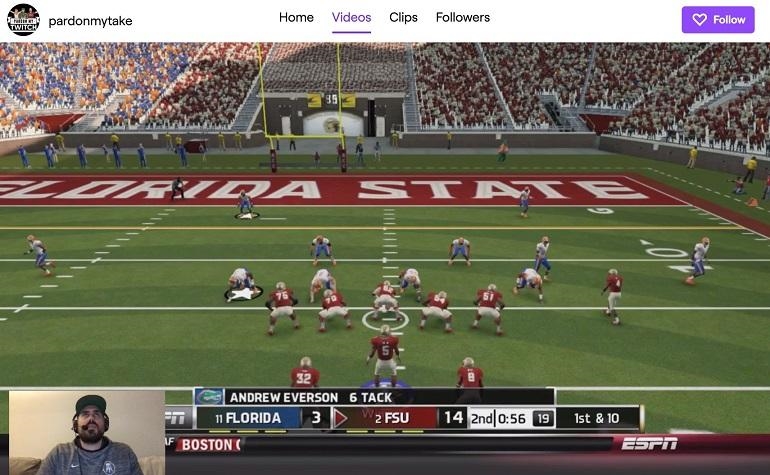
And then, of course, everything changed. Due to the necessity of social distancing, musicians are unable to tour, comedians are unable to perform, and athletes are unable to play. Suddenly, live streaming has gone from a fun format to play with to a necessary means of connection.
As a marketer, you’re well aware that connection is everything. And if you’re a marketer who specializes in conferences and events, now is a particularly challenging time.
So, let’s take this opportunity to learn more about YouTube live streaming. Whether you’re an events marketer looking to replicate the experience of an in-person gathering or a content specialist trying to expand your toolbox, YouTube Live is something everyone can benefit from.
An introduction to YouTube Live
YouTube live streaming—otherwise known simply as YouTube Live—is a method of reaching your target audience in real time. When you go live, your stream is housed in the Live section, found on the left-hand side of the YouTube homepage.
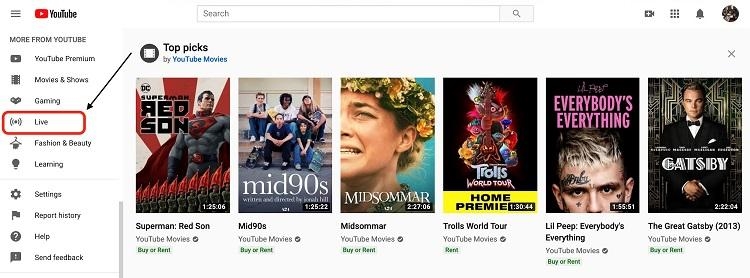
Users interested in live content can navigate to the Live section and find your stream. Of course, you don’t need to rely entirely on users taking this initiative; anyone who’s recently watched your videos, watched videos similar to yours, or subscribed to your channel will likely see your live stream on their personalized homepage. (We’ll talk about promotion later on in this post.)
Why should I go live on YouTube?
If you’ve ever watched a YouTube live stream, you already know what makes it such a special form of online content: It makes you feel as if you’re part of an event. Because each viewer is consuming the exact same content at the exact same time—and because viewers are encouraged to use the chat function to share their thoughts and questions—a YouTube live stream is an extraordinarily engaging experience. It’s all the excitement of a live sporting event mixed with the intimacy of a small concert.
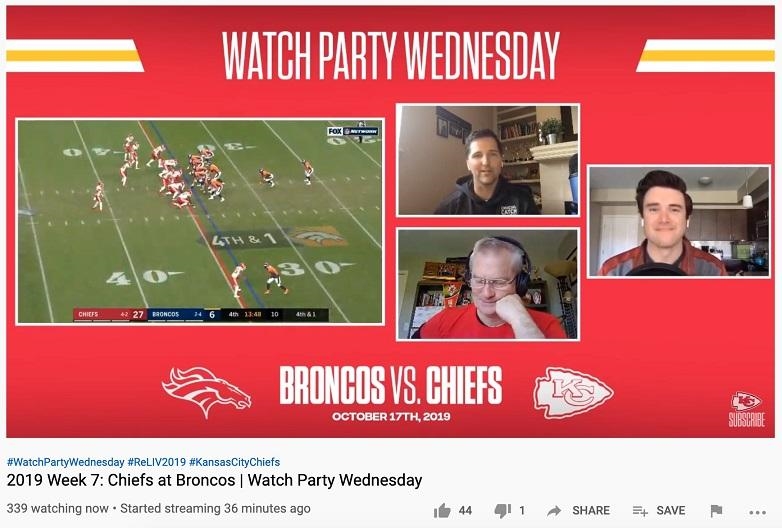
The Kansas City Chiefs use watch parties to engage their fans during the offseason.
So why go live on YouTube? Because live streaming allows you to connect with your target audience in a way that can’t be replicated with a blog post, podcast episode, or standard video. Even if you’re skeptical of its efficacy, there’s no denying that live streaming is a fundamentally unique style of content. And if you’re committed to differentiating yourself from your competitors, doing something unique is absolutely necessary.
Let’s say you’re a marketer at a supply chain management firm and you want to repurpose some of your educational blog content. Why not turn those posts into brief presentations and deliver them via live streams? That way, you can directly interact with your prospects in real time and showcase your brand personality in a new way. Plus, being able to immediately answer your prospects’ questions as they come to mind is incredibly powerful.
Types of YouTube live streaming
Not all YouTube live streams are alike. According to Google, there are two major types of live streams: simple and customized.
Typically, a simple live stream is conducted via webcam. As long as you have an internet connection and a laptop, you can use your webcam to go live on YouTube. And if your channel has more than 1,000 subscribers, you also have the option to go live through a smartphone. If you’re short on resources and you want to use YouTube Live to conduct Q&As or deliver very simple presentations, using your webcam or smartphone is a good option.
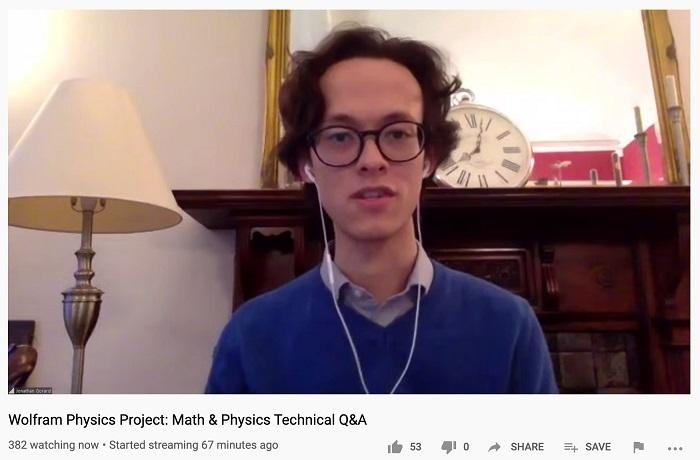
A customized live stream, on the other hand, is a more complex production. The defining characteristic of a customized live stream is the use of an encoder—a piece of software that allows you to share your screen and use multiple cameras and microphones. So, if you want to go live on YouTube and stream the recording of your podcast or deliver a visually aided presentation, you’re going to need an encoder. Google has compiled a list of YouTube Live verified encoders here.
YouTube Live statistics
Before we move on to the next section, I want to quickly share a few statistics from an insightful study conducted by Livestream and New York Magazine. After surveying 1,000 adults to learn more about their content consumption habits, the researchers found that:
- 81% would rather watch a live video than read a blog post.
- 82% prefer live video over social media posts.
- 70% cite YouTube as their favorite platform for live content.
So, yeah. When I say live streaming on YouTube is a good idea, I mean it’s a good idea.
How to promote your YouTube live stream
Time to state the obvious: There’s no point in going live on YouTube if nobody watches it. Yes, doing a simple stream through your webcam or phone is practically free. Nonetheless, time spent live streaming is time not spent generating leads and closing sales. Plus, if you want to invest in a customized stream, we’re talking about several pieces of expensive equipment.
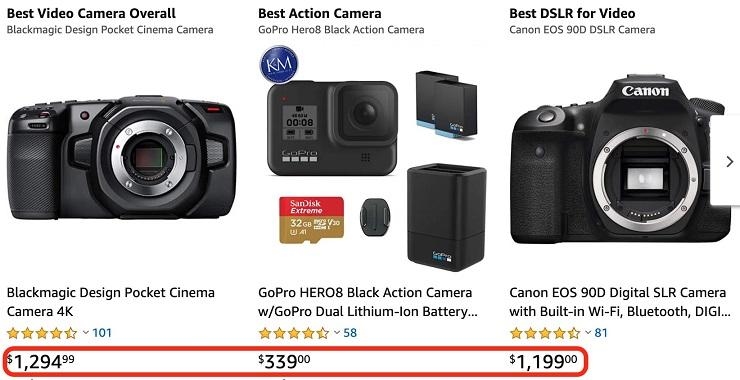
One camera alone is going to cost you a decent amount of money.
I say all that to say this: You need to put some serious thought into the promotion of your live stream. Let’s walk through some tactics you can use.
Get the word out on social media
Perhaps the most obvious way to promote your YouTube live stream is to get the word out to your social media followers. Tweets, Instagram stories, Facebook posts—the whole nine yards. I strongly discourage simply copying and pasting across platforms. People use different social platforms for different reasons, and they expect to see different types of brand content depending on the feed they’re scrolling through. Whereas your Facebook fans may expect you to use a more serious, professional tone, your Twitter followers may be more open to humor and levity. The more thoughtful you are about the promotional messaging you post across platforms, the better results you can expect to see.
Beyond organic social marketing, I encourage you to experiment with miniature Facebook advertising campaigns. One of the beautiful things about Facebook is that you’re not required to spend a certain amount of money or run ads for a certain amount of time; you can spend as little as you want, and you can advertise for whatever stretch of time you deem necessary.
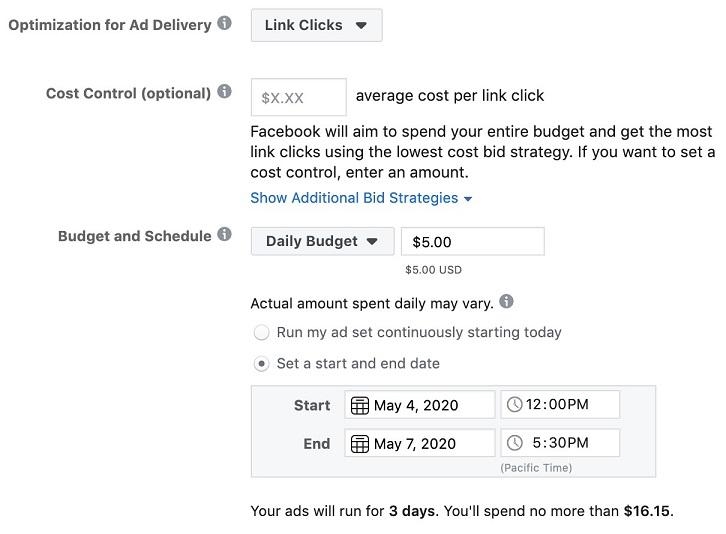
Here’s an idea: A few days before your live stream, throw a couple bucks behind a Facebook ad targeted at users who follow your chief competitor’s page. You can link to your YouTube channel and say something along the lines of, “We’re going live on YouTube at 6 p.m. on Thursday! We’ll be sharing insights you can’t afford to miss. Subscribe now to make sure you’re notified as soon as the stream starts!”
Tap into your email contacts
Let’s be honest with each other: Email marketing isn’t sexy. It’s not hot in the streets. It’s the digital marketing equivalent of Tupperware.
But here’s the thing: It works—it really, really works. And that’s why you should use it to promote your upcoming YouTube live stream.
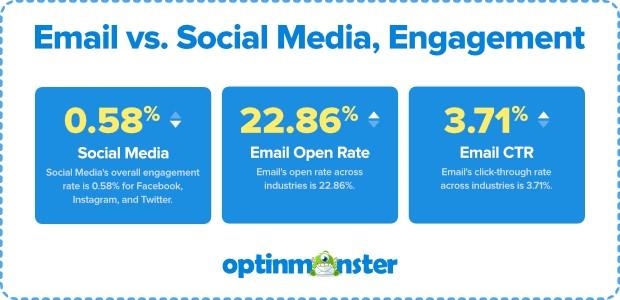
Via OptinMonster.
Although cold email most certainly has its place, I don’t recommend promoting your live stream to complete strangers. (No, I don’t consider the followers of your competitor’s Facebook page complete strangers; at the very least, they’ve demonstrated interest in what you’re selling.) Instead, reach out to the folks who’ve voluntarily given you their email address—newsletter subscribers, whitepaper downloaders, prospects who reached out for a quote or consultation, etc. Specifics aside, the idea is that you want to target people who have, in one way or another, shown their interest in your business.
Make sure your email copy emphasizes the value your live stream will provide. What topics are you going to address? Which pain points are you going to alleviate? What, specifically, will your viewers get out of it?
Grow your audience on YouTube itself!
Per YouTube’s algorithms, some of the users who watch your content (and content that’s closely related to yours) will find out about your live streams via their personalized homepages. Therefore, in order to attract bigger and bigger live stream audiences over the long term, you should try to grow your YouTube following in general. The more users watching your standard videos on a regular basis, the more users YouTube will notify about your live streams.
There’s no shortage of small steps you can take to increase viewership and win more subscribers. Use your video titles to create a curiosity gap. Add cards to the end of your videos to promote related pieces of content. Link up with other content creators whose audiences might be interested in what you have to say. In short, get creative!
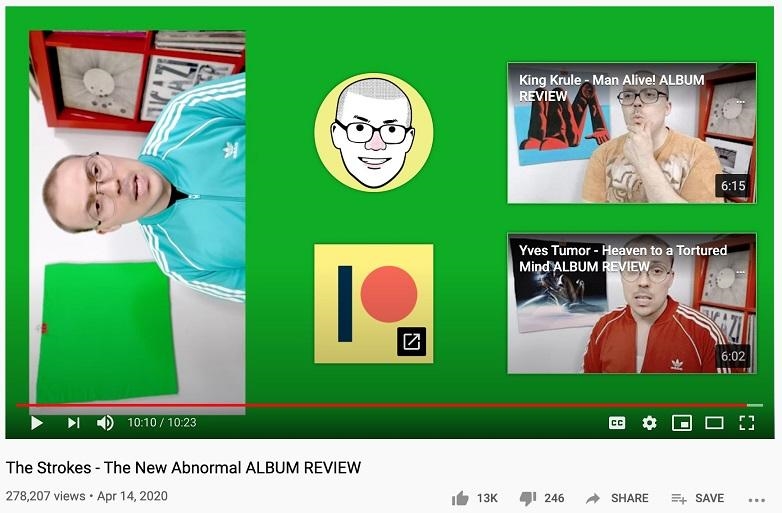
6 tips to succeed with YouTube Live
Alright, folks. Now that we’ve established the basics of YouTube live streaming and the steps you can take to get the word out, let’s wrap up by walking through six tips to make your live streams successful.
1. Provide value to your viewers (duh)
It’s time, once again, to state the obvious: No one is going to watch a live stream unless they’re confident they can get something out of it. Therefore, if you want to consistently attract a substantial audience, you need to do your homework.
What are the most common frustrations in your customers’ day-to-day lives? What keeps them up at night? What are their goals, and what might stop them from achieving those goals? What are some insights that you can provide in order to make their lives easier?
These are kinds of questions you should be asking yourself when brainstorming the content of your next live stream. You’re not going to succeed with YouTube live streaming—or content marketing in general, for that matter—if you’re not arming your prospects with information they can translate into revenue.
2. Encourage real-time participation
An easy and effective way to keep your viewers engaged throughout the duration of your live stream is to encourage participation via the real-time chat function. Keep in mind that much of the appeal of a live stream comes from the feeling that you’re taking part in something special. Getting your viewers to chime in with their thoughts and questions is a terrific way to augment that feeling.
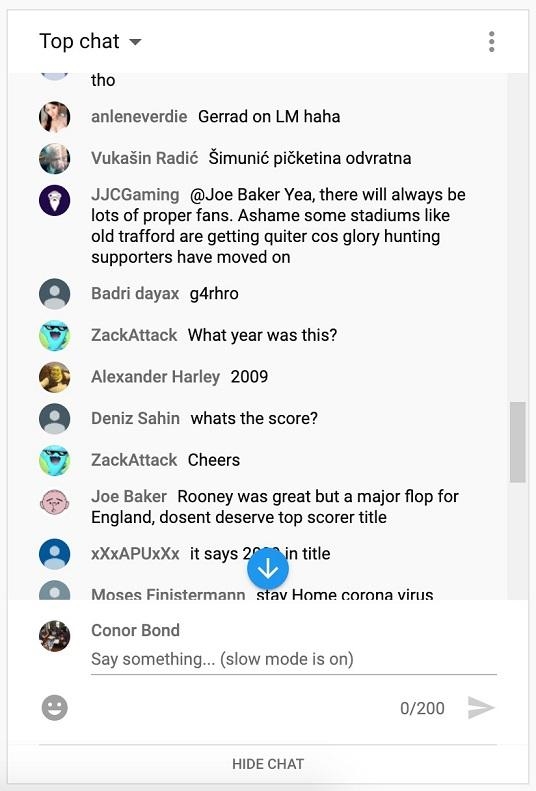
Let’s return to the example of a marketer at a supply chain management firm. Say you’re hosting a live stream to educate your prospects on the importance of sustainability. Why not get people talking by asking them to share the ways in which they make their production processes more sustainable? Not only does this create a form of user-generated content, but it allows you to bounce off their ideas and make the experience more interactive.
3. Incorporate visual aids
If you plan on using YouTube Live primarily for Q&As, you’re probably OK to simply sit in front of a laptop webcam. If, however, you want to do some full-blown presentations—live webinars, virtual speaking engagements, etc.—I highly recommend the use of visual aids. Without notes, charts, graphics, or some other form of complementary content to support the words you’re saying, your viewers are going to get bored. Plus, they probably won’t retain much of the information, thus rendering the whole exercise a waste of valuable time.
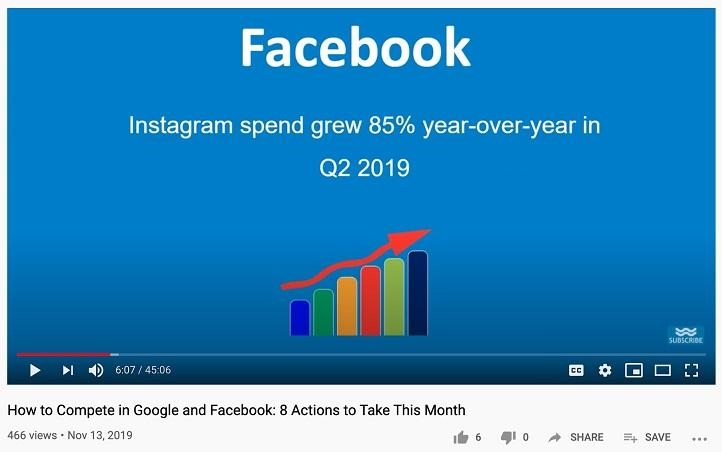
Check out the full video here.
Here’s what I suggest: Open up a Word doc and type out everything you want to say. (No, you shouldn’t read a script during your live stream.) Then, read through it and note the places where visual aids would be most valuable. It’s perfectly fine to have stretches of time where you’re simply a talking head, but you’ll need to break up the monotony fairly often. If it were my live stream, I wouldn’t go more than 30 seconds without some kind of graphic or image.
4. Find ways to make the experience fun
Contrary to popular belief, providing value to your viewers doesn’t mean you can’t make your live stream fun. Although informing your prospects should absolutely be the priority, I think it’s important to make the experience, y’know, enjoyable. After all, if you bore people to the point of zoning out, it’s unlikely that they’ll retain much of anything.
One way to infuse some fun into your live stream is to make it a happy hour. Just because you’re breaking down the ins and outs of cloud computing, doesn’t mean you can’t have yourself a refreshing pilsner. Schedule your live stream for 5pm on a Thursday or Friday, invite your viewers to BYOB, and blow their minds with 30 minutes of insights—but, like, casually.
Alternatively, you can invite a customer to join you on the stream. This takes away the pressure of being the only speaker, and it gives your prospects an opportunity to hear an organic testimonial. There should be some structure to the conversation, but it doesn’t need to be a formal interview. Simply talking about your customer’s experience in a natural manner should translate into valuable, memorable content.
5. Consistently ask for feedback
No live stream is without its flaws. No matter how much you prepare, no matter how thoughtful you are about your viewers’ interests and pain points, there are going to be bumps in the road. Naturally, different marketers are going to struggle with different issues. Whereas one person’s stream may suffer from technical problems, another may miss the mark with their messaging. Irrespective of specifics, the important point here is that you must always ask your viewers for constructive feedback. Not only will this translate into better and better live streams over time, but it will also make your audience feel valued and heard.
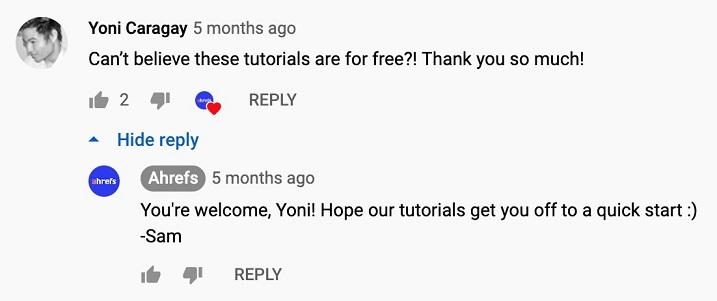
A little goes a long way.
Here’s an idea: At the beginning of your next live stream, ask your audience members to reach out via social or email with any feedback they have. Viewers tend to drop off when it becomes clear that the stream is ending, so I think it’s best to encourage feedback right off the bat.
Please, please, please respond to each and every message you get! Even if you don’t agree with a particular viewer’s ideas, it’s important that you acknowledge their efforts. And on those occasions when you do agree with someone’s ideas, consider giving them a shout-out during your next live stream. This will go a long way towards showing your viewers that their feedback is truly encouraged and appreciated.
6. Never stop experimenting
YouTube live streaming may be a fundamentally unique form of content, but it shares one thing in common with every other facet of your marketing strategy: It won’t work unless you’re diligent about A/B testing. If you want to improve the quality of your content—and the size of your audience—it’s imperative that you never stop experimenting.
The day of the week that you go live. The time of day that you go live. The ways in which you encourage your viewers to participate. The types of live streams you produce. The topics you address. The length of your live streams. The channels you use to promote your live streams.
This is just a small sample of the many variables you can test in order to make your YouTube live streams as successful as possible. Experimentation is an essential part of any type of marketing, but this is an area in which you should be particularly open-minded. Live streaming is a terrific way to engage your audience and build brand affinity, but it’s not directly tied to your revenue. I say this not to diminish the value of live streaming, but instead to illustrate the degree of freedom you have to try new things.
Get out of your comfort zone. Run with unusual ideas. Try something that nobody else is doing.
The results may surprise you.
Digital & Social Articles on Business 2 Community
(88)
Report Post